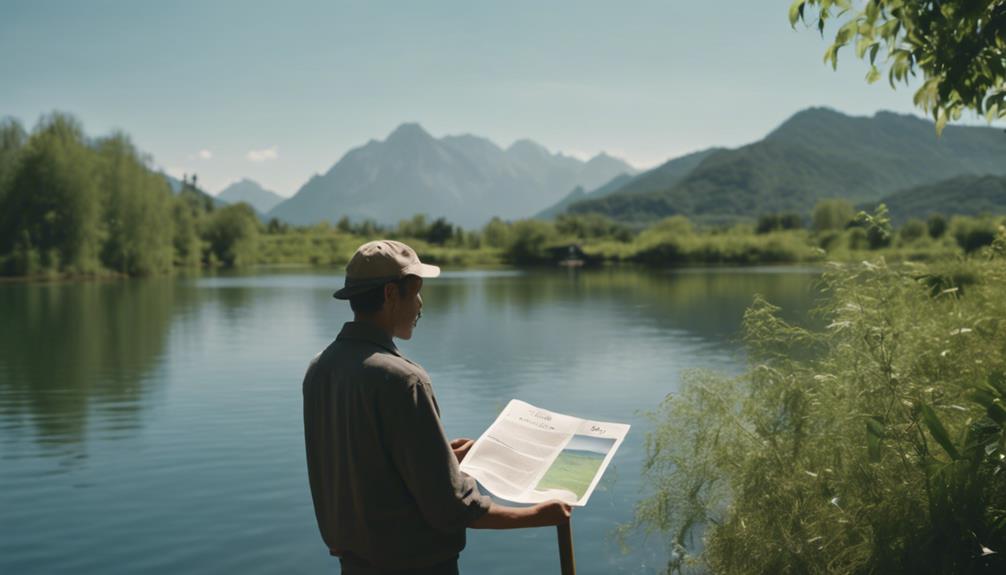Understanding Fly Fishing: What Is It?
Fly fishing is a unique method of angling that uses artificial flies to catch fish. Unlike traditional fishing methods that rely on bait, fly fishing involves casting a lightweight lure, known as a fly, that mimics the appearance and movement of fish prey. These flies are made from materials such as feathers, fur, and synthetic fibers, and are designed to float or sink in water, depending on the type of fish being targeted. The technique is especially popular among anglers seeking species like trout, bass, and salmon in freshwater, and tarpon and bonefish in saltwater. Understanding what fly fishing is will not only enhance your appreciation for the sport but also guide you on how to start your fly fishing journey.
The History of Fly Fishing: From Ancient Times to Today
Fly fishing has a rich history that dates back to ancient civilizations. The earliest recorded instances of fly fishing can be traced to the Roman Empire, where anglers used simple hooks and lines to catch fish. Over the centuries, the practice evolved, and by the late 19th century, it became more popular in the United States and Europe. This period saw the emergence of specialized fly rods, reels, and the creation of intricate fly patterns. Today, fly fishing is not only a beloved pastime for many but also a sport that emphasizes conservation and sustainable practices. Understanding the historical context of fly fishing can deepen your connection to this time-honored tradition.
Essential Gear for Fly Fishing: What You Need to Get Started
If you’re wondering what fly fishing is, you’ll also want to know about the essential gear needed to get started. The basic equipment includes a fly rod, a fly reel, and a selection of flies. Fly rods are typically longer and more flexible than regular fishing rods, allowing for better casting control. Fly reels store the line and help in retrieving fish. Additionally, you’ll need specialized fly line, which is heavier than standard fishing line, allowing for accurate casting. Don’t forget about waders to keep you dry, and a good pair of polarized sunglasses to reduce glare on the water. Investing in quality gear is crucial for a successful fly fishing experience.
Choosing the Right Location: Fly Fishing Hotspots
When it comes to fly fishing, location is key. Different bodies of water and environments provide various opportunities to catch different species of fish. Freshwater locations, such as rivers, streams, and lakes, often have populations of trout and bass, while saltwater fishing can yield species like tarpon and redfish. Researching local hotspots, understanding seasonal fish migrations, and scouting for hatches (periods when insects are abundant) can significantly enhance your chances of landing a catch. Joining local fishing forums or talking to seasoned anglers can also help you discover the best places to cast your line.
Techniques and Tips: Mastering the Art of Fly Fishing
Understanding what fly fishing is also involves learning the different techniques that make it effective. Casting is one of the most critical skills to master. The most common fly-casting techniques include the overhead cast, roll cast, and double haul. Each technique has its purpose and is useful in various fishing situations. Practicing these casts in an open space can help you gain confidence on the water. Additionally, understanding how to read the water, recognizing where fish are likely to be, and knowing how to retrieve your fly can drastically improve your success. Using the right technique can make all the difference in your fly fishing experience.
The Importance of Conservation in Fly Fishing
As you delve into the world of fly fishing, it’s vital to consider its impact on the environment. Conservation plays a crucial role in this sport, as many anglers are committed to protecting aquatic ecosystems. Practicing catch and release, minimizing your impact on the environment, and respecting local regulations are essential for sustaining fish populations. Many organizations focus on habitat restoration and education, ensuring that future generations can enjoy fly fishing. Understanding the importance of conservation not only helps preserve the sport you love but also promotes a healthy ecosystem for all wildlife.
Fly Fishing for Beginners: Tips to Get Started
If you’re new to fly fishing, it can be both exciting and intimidating. The best way to ease into the sport is by taking a class or hiring a guide who can teach you the basics. Many local fly shops offer lessons and workshops tailored for beginners. Additionally, investing in a beginner-friendly fly rod and reel combo can make the learning process easier. Start by practicing casting in a park or open space before heading to the water. Joining a local fly fishing club or forum can also provide support, tips, and camaraderie as you embark on your fly fishing journey.
Embracing the Fly Fishing Community: Connecting with Fellow Anglers
One of the most rewarding aspects of fly fishing is the community it fosters. Engaging with fellow anglers can enhance your experience through shared knowledge, friendship, and camaraderie. Whether you join local clubs, participate in tournaments, or attend fly fishing expos, there are countless opportunities to connect with others who share your passion. Social media platforms and online forums are also excellent resources for finding local meet-ups and events. The fly fishing community is known for its welcoming nature, making it easy for newcomers to find their place in this vibrant culture.
In conclusion, understanding what fly fishing is and how to get started can open up a world of adventure and enjoyment. With the right gear, techniques, and community support, you can embark on a rewarding fishing journey while contributing to the conservation of our natural resources. So grab your gear and hit the water—your fly fishing adventure awaits!
